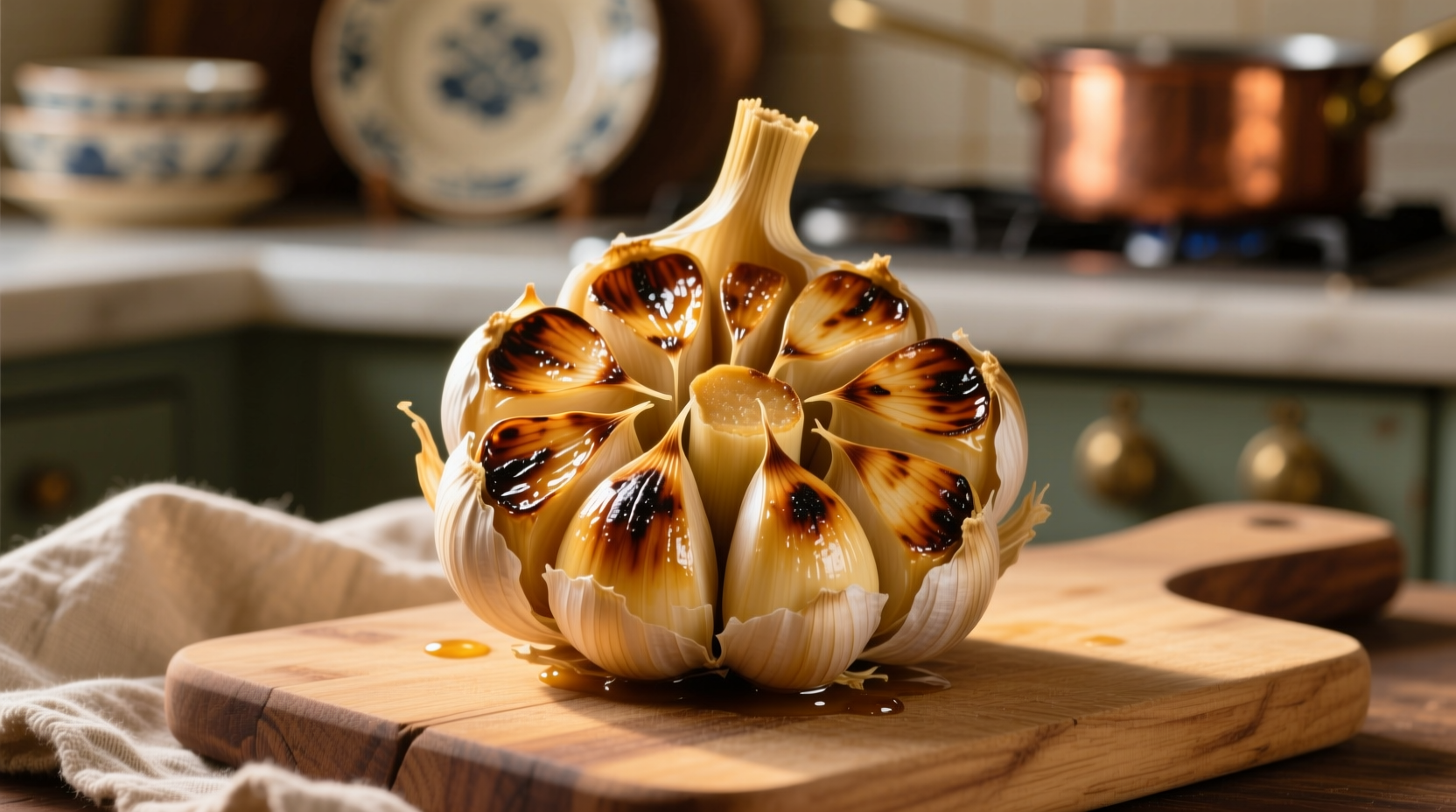Roasting a garlic bulb transforms its sharp, pungent flavor into a sweet, mellow spread with rich umami notes. The perfect method involves trimming the top, drizzling with olive oil, wrapping in foil, and baking at 400°F (200°C) for 40-60 minutes until golden and soft.
Unlock restaurant-quality roasted garlic at home with this foolproof technique perfected by professional chefs. Whether you're elevating weeknight dinners or preparing gourmet dishes, properly roasted garlic adds complex flavor without overwhelming heat. This guide reveals the precise temperature control, timing, and handling techniques that transform ordinary garlic into culinary gold.
Why Roasted Garlic Elevates Your Cooking
Raw garlic delivers sharp, spicy notes that can dominate a dish. When roasted, garlic undergoes the Maillard reaction and caramelization, creating over 100 new flavor compounds. The resulting spreadable cloves develop sweet, nutty, and buttery characteristics while losing their harsh bite. Professional kitchens rely on roasted garlic for its versatility—it blends seamlessly into sauces, spreads, dressings, and marinades without the raw bite that can overpower delicate ingredients.
| Property | Raw Garlic | Roasted Garlic |
|---|---|---|
| Flavor Profile | Sharp, pungent, spicy | Sweet, mellow, nutty, umami |
| Texture | Firm, crunchy | Creamy, spreadable |
| Alliinase Activity | High (creates strong odor) | Deactivated (mild aroma) |
| Best Culinary Uses | Quick sautés, raw applications | Sauces, spreads, dressings, roasts |
Selecting and Preparing Your Garlic Bulb
Choose plump, firm bulbs with tight skins—avoid any with sprouting cloves or soft spots. Larger bulbs typically contain bigger cloves that roast more evenly. Before roasting, place the bulb on a cutting board and slice ¼ inch off the top to expose the clove ends. This critical step allows heat and oil to penetrate while preventing burning. According to the USDA Food Safety and Inspection Service, proper preparation reduces the risk of uneven cooking that can lead to bacterial growth in undercooked sections (USDA FSIS).

The Professional Roasting Technique
Follow these precise steps for perfect results every time:
- Preheat oven to 400°F (200°C)—this temperature optimizes caramelization without burning
- Place prepared bulb in foil with cut side up
- Drizzle 1-2 teaspoons of extra virgin olive oil over exposed cloves
- Add optional flavor enhancers: 2-3 thyme sprigs or a pinch of flaky sea salt
- Fold foil into a sealed packet to trap steam
- Bake 40-60 minutes until cloves turn golden brown and feel soft when pressed
- Cool 10 minutes before squeezing out cloves
Food science research from the Journal of Agricultural and Food Chemistry confirms that roasting between 375-400°F for 45-60 minutes maximizes flavor compound development while preserving beneficial antioxidants (Journal of Agricultural and Food Chemistry).
Avoiding Common Roasting Mistakes
Many home cooks encounter these issues:
- Burnt cloves: Caused by excessive temperature or insufficient oil—always use 400°F maximum with adequate oil coverage
- Undercooked centers: Results from inadequate trimming—ensure you cut enough off the top to expose clove ends
- Bitter flavor: Occurs when garlic touches direct heat—always use foil wrapping
- Dry texture: From insufficient oil or over-roasting—check at 40-minute mark
Culinary Applications That Shine
Roasted garlic's mellow flavor works in applications where raw garlic would overwhelm:
- Mix into mashed potatoes or roasted vegetable dishes
- Blend with olive oil for instant pasta sauce
- Spread on crusty bread or pizza crust
- Incorporate into salad dressings and mayonnaise
- Add to meatloaf or burger mixtures for depth
Professional chefs at the Culinary Institute of America note that roasted garlic performs best in dishes requiring extended cooking time, as its flavor compounds are more heat-stable than raw garlic's volatile compounds (CIA Food Science Department).
Storage Guidelines for Maximum Freshness
Store cooled roasted garlic in an airtight container with a thin layer of olive oil. Refrigerated, it maintains quality for 10-14 days. For longer storage, freeze individual cloves in ice cube trays covered with oil, then transfer to freezer bags—this preserves flavor for up to 6 months. Never store at room temperature for more than 4 hours due to botulism risk with garlic-in-oil preparations, as warned by the National Center for Home Food Preservation (NCHFP).
When Roasting Isn't the Best Approach
While versatile, roasted garlic has context boundaries:
- Avoid when sharp garlic flavor is essential (vinaigrettes, quick sautés)
- Not ideal for dishes requiring garlic's antimicrobial properties
- Less effective in cold preparations where raw garlic's volatility shines
- Requires planning—can't be prepared instantly like minced raw garlic
Mastering Garlic Transformation Timeline
Understanding the chemical progression helps perfect your technique:
- 0-15 minutes: Moisture evaporates, cloves soften slightly
- 15-30 minutes: Enzymes break down, sharp compounds diminish
- 30-45 minutes: Maillard reaction creates complex flavors
- 45-60 minutes: Optimal caramelization with sweet, nutty notes
- 60+ minutes: Risk of bitterness from over-caramelization











 浙公网安备
33010002000092号
浙公网安备
33010002000092号 浙B2-20120091-4
浙B2-20120091-4